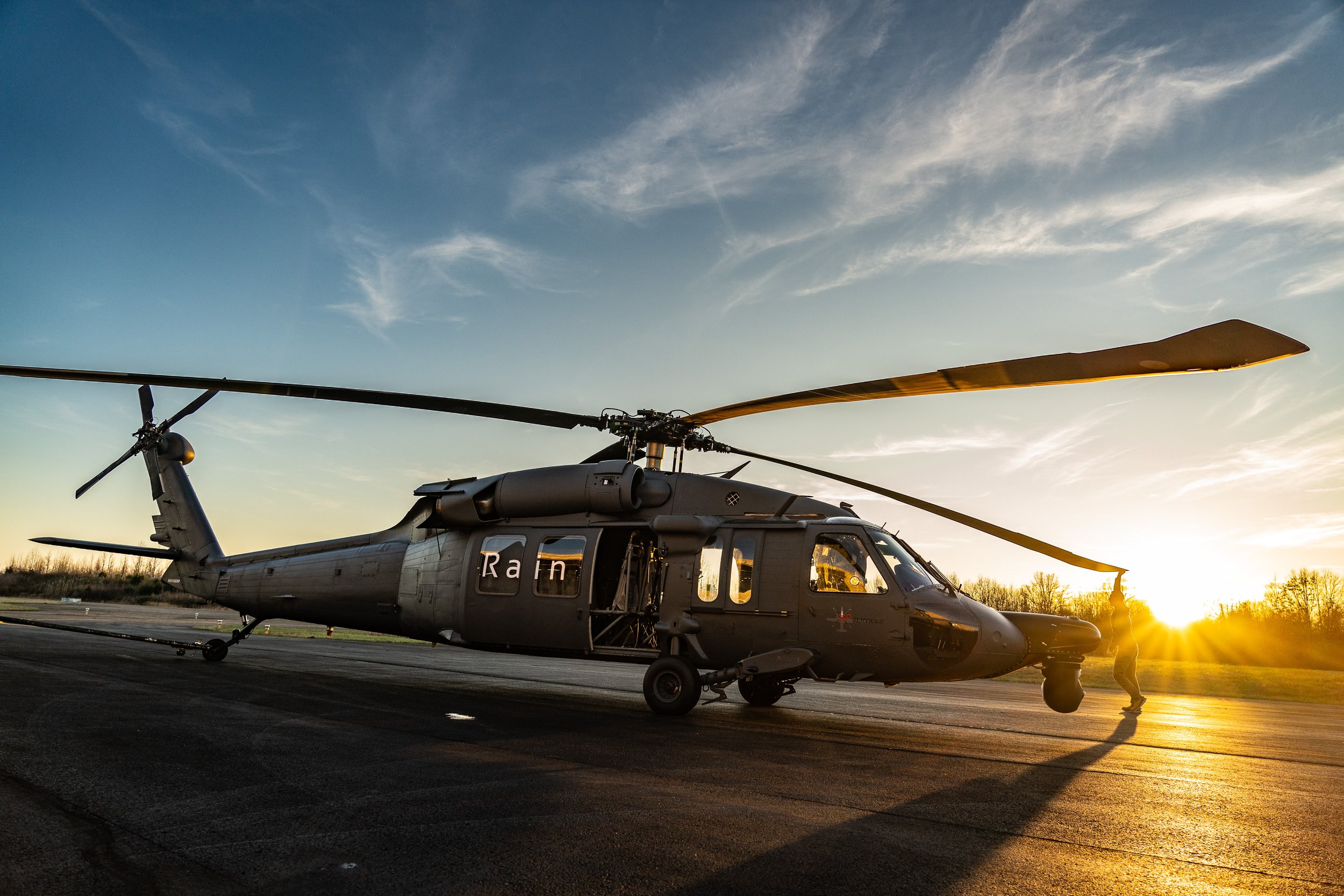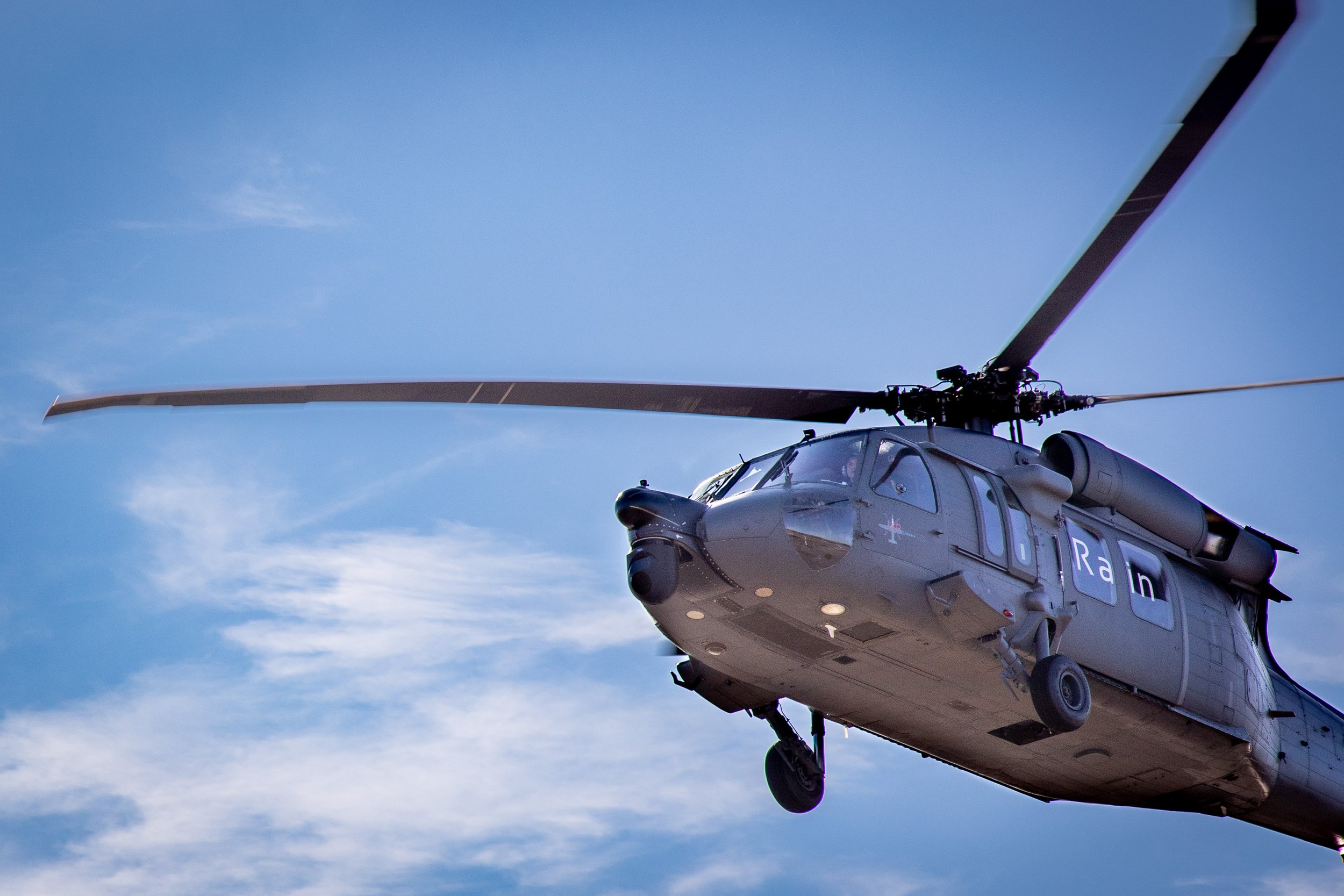What if we could install fire sprinklers for the forest?
Rain flies remotely-commanded Black Hawk helicopter, demonstrating goal of suppressing fires automatically from afar
In December of 2022 the Rain team sent a series of waypoints from our command center in California to a Rain Aircraft Integration Kit installed on a Black Hawk helicopter in Tennessee, guiding it to a hypothetical fire.
Over 100 million Americans live in an area that is threatened by wildfire. Natural, beneficial fire is a boon to many fire-adapted ecologies, but catastrophic wildfires, set by lightning or human fallibility during the dry season — those are what keep us up at night.
Adapting to fire has become a necessity as the frequency and severity of catastrophic wildfires is increasing — a result of climate change, further exacerbated by the fact that more people are living at the wildland-urban interface. The UN predicts extreme fire will increase by about 50% by the end of the century, with extreme fire events already playing out in the Western US, northern Siberia, central India, and eastern Australia. We don’t know what this fire season will hold for us here in California, but in Spain, fire season came early.
Black Hawks are favored helicopter for firefighting fleets because they can handle difficult conditions while carrying heavy loads. They are also widespread — as of January 2023, Sikorsky had manufactured 5,000 Black Hawks, and there is a wide pool of highly trained pilots and technicians.
The nascent stages of fire are a critical opportunity for quick, efficient fire suppression. In California alone there are already over a thousand fire watch cameras continuously monitoring over 90% of the state’s extreme and high fire threat areas. Rain integrates with these camera feeds and other early detection sensors to dispatch nearby autonomous helicopters within seconds, so that fires can be contained within minutes.
To bring ultra-fast rapid initial attack capabilities to fire professionals as soon as possible, our Rain Aircraft Integration Kits will enable fire agencies to upgrade their existing fire fleets with new software and avionics. In addition to ultra fast rapid initial attack capabilities, our technology gives Incident Commanders fast, accurate information about fire behavior to make decisions about what additional resources may be required, what evacuations to order, and how to prioritize incidents.
Uncrewed aircraft will be able to operate at night, can be installed in the most rural locations, and respond within seconds of an ignition being detected. Above, our Rain Aircraft Integration Kit slides into the avionics rack of a Black Hawk in Tennessee. Our kits are built to extend the capabilities of already-existing fire fleets.
Last year, we integrated our software with a demonstrator aircraft (the Mosquito) which allowed us to test the Kit’s capabilities before transitioning to a deployment-ready system. This smaller experimental aircraft carries approximately 30 gallons of payload, and is designed to fly for over an hour with a 23 mile response radius — the Mosquito is a big step up from smaller drones we tested with in years past.
However, we knew from studying the physics of fire growth that larger uncrewed aircraft will be required to reliably contain the worst wind-driven ignitions. In parallel to integrating with the Mosquito platform, our team began adding support for the Black Hawk to our Aircraft Integration Kit. In simulation we found that a network of approximately 200 Rain Stations housing larger uncrewed aircraft like the Black Hawk could end catastrophic wildfire in California, an audacious goal but nonetheless achievable by 2030 if we can build public awareness and support for this technology.
Black Hawk helicopter pilot Carey Mills (right) and co-pilot Frank Lombardi (left) keep their hands up and away from the controls during Rain’s remote command of the aircraft from over 2000 miles away.
If Rain Stations were to be installed across the US in high and extreme wildfire regions, between $149 and $348 billion in annual costs and losses attributed to wildfire would be eliminated. Should Rain be deployed globally throughout regions at highest risk of wildfire, 18% of global fossil fuel CO2 emissions would remain sequestered rather than enter the atmosphere.
At the close of the fall test campaign with the Mosquito, our team turned their full attention to completing the Black Hawk integration. Our goal was to remotely command a UH-60 Black Hawk which had been specially outfitted with a suite of avionics and actuators from Genesys Aerosystems, a technical partner for this test. On test day, from the dark depths of our mission control trailer (we started the day at 4 am PT) we sent a series of waypoints from our command center in California to a Rain Aircraft Integration Kit on the Black Hawk in Tennessee, guiding it to a hypothetical fire. Once the on-board safety pilots activated the flight plan, they took their hands off the controls and the aircraft flew itself to the destination and back.
Ephraim Nowak, our Chief Engineer explains the test as, “a critical first proof-of-concept to illustrate how our software will allow uncrewed aircraft to support firefighting missions.”
Our initial test campaign in December gave us insight into our roadmap to mature this technology for deployment with fire agencies. As we prepare for our next campaign, our team is focusing on integrating our fire perception and suppression strategy with existing aircraft avionics to equip incident commanders with extremely rapid situational awareness and knockdown capabilities.
We believe that equipping fire agencies with technology to stop wildfires before they grow out of control will save lives, livelihoods, and communities. We see a near future where people can live, work, and play in remote and rural regions without fear of wildfire and where people in cities and urban areas can enjoy the outdoors without experiencing suffocating smoke. Helping re-introduce beneficial fire into the ecosystem by providing a backstop against runaway prescribed fire feels like a worthy mission to all of us here at Rain.
I am incredibly proud of our team for advancing technology to end catastrophic wildfires at an exhilarating pace. We have many more exciting milestones ahead of us in 2023 on our journey to help create a world without fear of catastrophic wildfires. More important than technology, we are building a community of fire professionals, technologists, land owners, policy innovators, and other friends who are the driving force behind bringing this technology into the world. I hope you will join us! We share more in-depth updates via our newsletter, which you can sign up for below.
Before dawn in California, Katie and Christina monitor the Tennessee Black Hawk’s flight from our mission control trailer. Christina (foreground) sent a series of waypoints from our command center to a Rain Aircraft Integration Kit on the Black Hawk in Tennessee, guiding it to a hypothetical fire. (Trivia note: a Black Hawk that is outfitted with fire gear by its manufacturer Sikorsky is called a Firehawk, and LA County and CAL FIRE in particular are known for their fleets).






